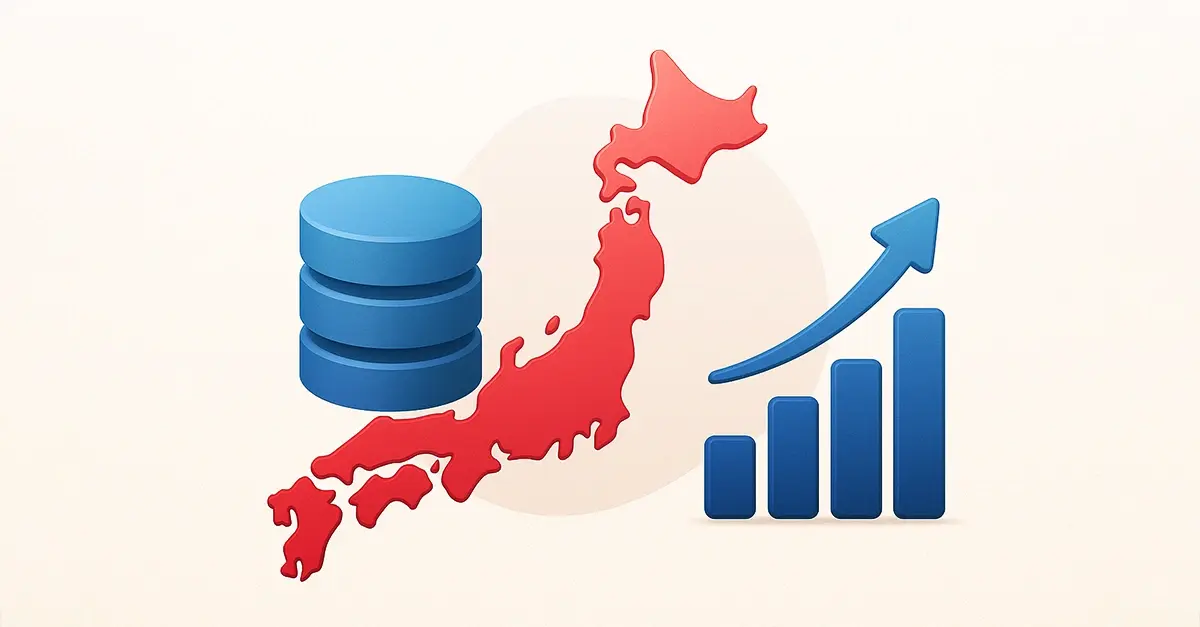Firmographic data use cases are at the core of effective B2B go-to-market execution. Without them, sales and marketing teams waste valuable time and budget chasing the wrong accounts, such as those with no budget, no need, or no alignment with your product.
By analyzing company-level attributes like industry, company size, revenue, location, and ownership type, firmographic datasets reveal exactly where your best opportunities lie. This enables precise targeting, stronger alignment between sales and marketing, and higher conversion rates.
In this guide, you’ll learn five proven firmographic data use cases that help B2B organizations:
- Segment and prioritize high-value accounts.
- Route leads efficiently to the right sales reps.
- Suppress irrelevant or redundant accounts.
- Personalize outreach based on account characteristics.
- Identify whitespace opportunities for market expansion.
Quick-Reference: TOP 5 Firmographic Data Use Cases
|
Use Case: |
What It Does: |
Business Benefit: |
|
Firmographic Segmentation |
Groups accounts based on ICP-aligned |
Increases targeting precision |
|
Lead Routing Optimization |
Routes leads to the right sales reps based on company size, industry, or revenue. |
Improves speed-to-lead and |
|
Account Suppression |
Removes unqualified, redundant, or |
Reduces wasted spend and increases outreach relevance. |
|
Personalized Messaging |
Tailors content to match the unique needs |
Strengthens engagement and trust. |
|
Whitespace Analysis & Market |
Identifies untapped markets or regions |
Guides efficient, data-driven |
1. Firmographic Segmentation & Prioritization
Firmographic data segmentation is the foundation of every B2B dataset - and, in turn, every high-performing B2B targeting strategy. Instead of casting a wide net across entire industries, it allows teams to group accounts by specific, high-value attributes that align with the ideal customer profile (ICP).
This targeted approach eliminates wasted outreach and focuses efforts on prospects with the highest likelihood of conversion.
1) Example
A cybersecurity SaaS provider wants to reach mid-sized enterprises in industries with strict compliance requirements. Using firmographic data, they identify healthcare, financial services, and energy companies with over 500 employees. These businesses not only have high cybersecurity needs but also the budget and urgency to invest.
2) Practical Steps
- Review historical CRM data to determine industries and company sizes that generate the most revenue.
- Define ICP firmographic criteria such as annual revenue range and employee count.
- Apply these filters in your CRM and marketing automation tools to refine account lists.
- Tailor campaign content for each firmographic segment to increase engagement.
3) Impact
Companies that apply precise firmographic segmentation typically see 20–40% higher response rates compared to broad, untargeted campaigns.
2. Lead Routing Optimization with Firmographics
Fast, accurate lead routing directly impacts your speed-to-lead and ultimately your close rate. Firmographic data use cases include building automated lead routing systems that send each inbound lead to the most qualified rep for that account type.
Without firmographic routing, leads can get stuck in generic queues or sent to the wrong sales team - slowing follow-up and reducing win rates.
1) Example
A B2B SaaS company’s inbound SDR team handles leads from enterprise technology providers, mid-market service firms, and small manufacturing businesses. Without firmographic insights, leads are randomly assigned. With firmographic routing rules:
- Enterprise technology leads → Senior enterprise sales executives.
- Mid-market leads → Mid-level reps specialized in that segment.
- SMB leads → Reps trained for quick, transactional sales.
2) Practical Steps
- Use CRM workflows to route leads automatically based on company size, industry, or annual revenue.
- Match each segment to sales reps with relevant experience and proven conversion history.
- Flag high-value accounts for instant follow-up.
3) Impact
Implementing firmographic-based lead routing can increase lead-to-opportunity conversion rates by 15–25% while reducing response times from days to hours.
3. Account Suppression Using Firmographics
One of the most overlooked firmographic data use cases is account suppression — proactively removing unqualified, redundant, or existing customer accounts from your marketing and sales activities.
Suppressing the wrong accounts keeps your outreach relevant, improves deliverability, and prevents wasted spend.
1) Example
A RevOps team is running a large outbound email campaign. Without suppression filters, they risk targeting:
- Companies that are too small or outside the target revenue band.
- Industries with historically low conversion rates.
- Existing customers already under contract.
By applying firmographic filters, they remove:
- All accounts with annual revenue below $5M.
- Industries with <2% historical conversion rate.
- All current customers from prospecting lists.
The result: cleaner lists, stronger campaign performance, and no wasted effort targeting irrelevant accounts.
2) Practical Steps
- Build suppression lists directly in your CRM using firmographic filters.
- Automate removal of accounts based on industry, company size, or geography.
- Sync suppression rules with marketing automation to prevent accidental sends.
- Continuously update suppression criteria based on performance data.
3) Impact
Account suppression using firmographics can reduce wasted marketing spend by 10–20% while improving open and click rates by keeping campaigns focused on the right audience.
4. Personalized Messaging with Firmographic Insights
B2B personalization goes far beyond inserting a prospect’s name into an email. One of the most effective firmographic data use cases is tailoring messaging and offers to align with an account’s specific characteristics.
Different segments, even within the same industry, often have different priorities, buying triggers, and pain points.
1) Example
A SaaS inventory management provider sells to both large retail chains and small independent boutiques.
- For large retail chains: Messaging focuses on multi‑location inventory visibility, centralized reporting, and operational efficiency.
- For small boutiques: Messaging emphasizes ease of use, affordability, and flexibility for smaller teams.
2) Practical Steps
- Create message frameworks for each firmographic segment.
- Align your value proposition with each segment’s unique challenges.
- Select case studies and proof points that closely match the target account profile.
- Integrate firmographic insights into sales scripts, nurture campaigns, and outbound sequences.
3) Impact
Personalized campaigns informed by firmographics can drive 30–50% higher engagement rates and improve conversion rates significantly compared to one‑size‑fits‑all messaging.
5. Whitespace Analysis & Market Expansion via Firmographics
Whitespace analysis — identifying untapped, high‑potential market opportunities — is one of the most strategic firmographic data use cases.
By mapping your total addressable market (TAM) against your current penetration, you can reveal overlooked regions, industries, or account types.
1) Example
A logistics software company has strong adoption on the West Coast and Northeast but minimal presence in the Midwest. Firmographic analysis reveals that the Midwest has a high density of mid‑sized logistics firms matching their ICP.
Armed with this insight, they:
- Assign sales resources to Midwest territories.
- Launch localized campaigns tailored to regional market needs.
- Open a regional sales hub to increase presence.
2) Practical Steps
- Use firmographic attributes to map market penetration.
- Identify underrepresented segments that align with your ICP.
- Allocate budget and resources to high‑potential whitespace.
- Test campaigns in new regions before fully scaling.
3) Impact
Firms using firmographic‑driven whitespace analysis often see 20–30% faster growth in expansion markets compared to less data‑driven approaches.
Why Data Quality Matters for Firmographic Data Use Cases
All of these firmographic data use cases depend on data quality. If the information is outdated, inaccurate, or incomplete, your targeting, routing, and segmentation will miss the mark.
High‑quality, verified firmographic data ensures:
- Accurate account segmentation.
- Proper lead routing to the right reps.
- Clean suppression lists without false positives.
- Personalization that reflects current account realities.
InfobelPRO delivers verified company intelligence for 375M+ businesses worldwide, covering 460+ structured attributes per company. This depth and accuracy provide the foundation you need to make each firmographic use case actionable, repeatable, and scalable.
Conclusion: Turning Insights into Revenue
Firmographic data is not just a theoretical concept. When applied strategically, it can improve targeting accuracy, boost conversion rates, and accelerate B2B revenue growth.
The five approaches covered in this guide, including segmentation, lead routing, account suppression, personalization, and whitespace analysis, show how these insights can transform your go‑to‑market strategy.
With high‑quality, verified data from a trusted source like InfobelPRO, these methods become repeatable processes that consistently deliver measurable results.
The benefits are clear:
- Stronger alignment between marketing and sales
- More efficient campaigns
- Shorter sales cycles
- Higher win rates
- Sustainable growth
Free Firmographic Data Audit and Sample
Now is the time to put these strategies into practice. With accurate, actionable insights guiding your efforts, you can consistently target the right accounts, engage them effectively, and accelerate your path to growth.
Contact us today to get your free firmographic data audit and sample - and discover exactly how precision data can fuel better targeting, higher conversions, and sustainable growth.






Comments